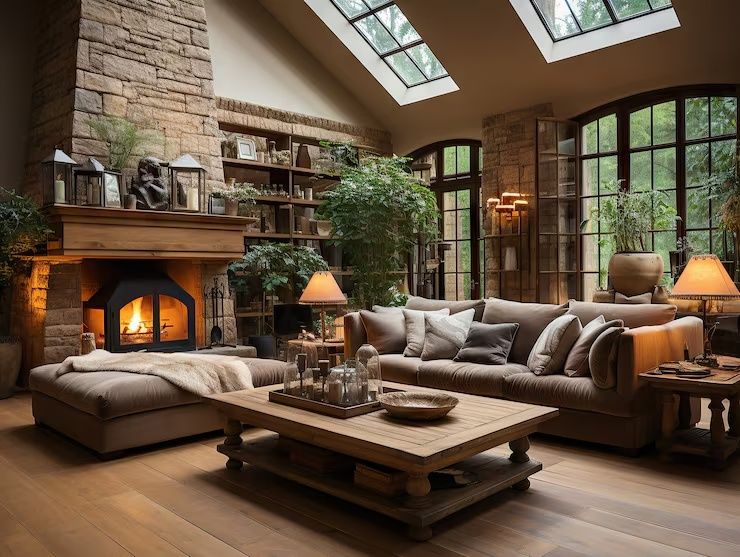The home interior design focuses on creating places that are both functional and visually. It combines creativity, plan and technical understanding to change the places that live in the environment that show personal style and comfort. From furniture and color straps to light and texture, the internal design integrates several elements to shape the total experience of the home.
Internal design exists because the houses are more than just structures; They are individual places that affect daily mood, welfare and lifestyle. A thoughtful design improves comfort, efficiency and aesthetics.

Importance
Home Interior Design means something because it:
It improves the efficiency of organizing rooms according to everyday needs.
Increases comfort and welfare through a balanced layout and comfortable atmosphere.
Individual identity reflects, lets homeowners express personality.
The value adds the value of the property as well as the space -designed room appeals to future residents.
Supports stability with environmentally friendly materials and energy -efficient solutions.
Internal design affects how people experience their surroundings, making it both a practical and creative effort.
Important items in interior design
Color schemes - Set the mood and theme of the room, including soothing the neutral to lively accents.
Light - natural and artificial light defines space perception and atmosphere.
Furniture - determines setup, comfort and tasks.
Texture and material - Add depth, heat and personality to the interior.
Space plan - ensures that rooms are functional and uncontrolled.
Decoration accessories - elements such as artwork, blankets and plants personalize spaces.
Newer updates and developments in 2024-2025
Internal layout develops with new technique:
Focus on sustainable stay cleansing, renewable and environmentally friendly materials.
Smart Home Integration - Complexing generation with layout for effective lighting fixtures, weather and protection.
Minorism with comfort - natural design that also prefers warmth and cosine.
Biophilic design - to deliver nature indoors thru plants, herbal mild and natural materials.
More vicinity - increasing call for for domestic workplaces and flexible regions.
Culture wooded area - Mix the design impact from different traditions for unique interiors.
These traits reflect each way of life modifications and growing environmental cognizance.
Laws and Guidelines affecting internal design
While the interior design is creative, it also matches rules in many areas:
Building code - Specify safety requirements, such as electric layout, ventilation and access.
Encourage stability regulations-energy efficiency and environmentally friendly building materials.
Health and safety rules - standard for indoor air quality, lighting and ergonomics.
Guidelines for cultural heritage - in some areas, historical or traditional influences form the boundaries.
They ensure that the design projects are both safe and obedient.
Home Interior Design Motivation Assistant Resources
Design software and apps - Plant recorders and 3D visualizers help with the form setup.
Interior design blogs and magazines provide ideas, trends and expert advice.
Color palette generators - useful for testing and matching chamber tones.
Advice on sustainability guide-environmentally friendly design options.
Workshops and online tutorials - help individuals develop design skills.
Mood Board - Visual collection of texture, color and furniture for direct design direction.
Frequently asked questions
What are the basic principles of internal design?
Balance, harmony, conditions, rhythms and emphasis are the most important principles that lead the internal design.
How do I choose a design style for my home?
Think about personal preferences, lifestyle and functionality in each place. Popular styles include modern, minimal, rustic and traditional.
What is easy in design?
Light affects the mood, highlights design elements and ensures functionality in everyday activities.
Can the interior design be durable?
Yes, environmentally friendly materials, energy case systems and natural lighting make the interior more durable.
Do I need professional help for home design?
While professionals provide expertise, many tools and resources allow individuals to design or plan the rooms independently.
conclusion
Home Interior Design is both an art and a science, which combines creativity with functionality to shape places of residence. From understanding the main elements as color, lighting and space planning, from the interior design's lifestyle needs, from understanding the main elements as stability and smart technology, the interior design continues to develop with lifestyle needs. By using accessories, resources and inspiration, you can do all interiors who are practical, beautiful and individually meaningful.